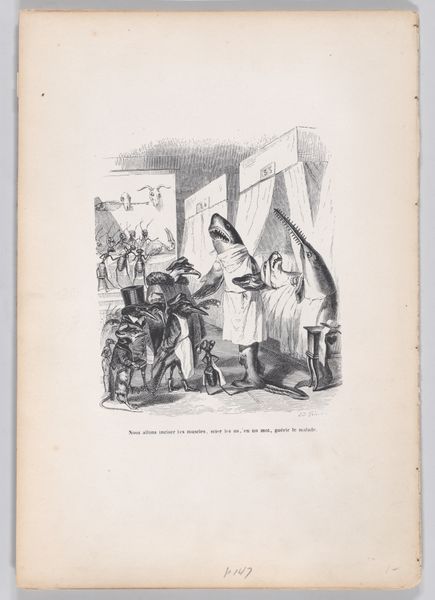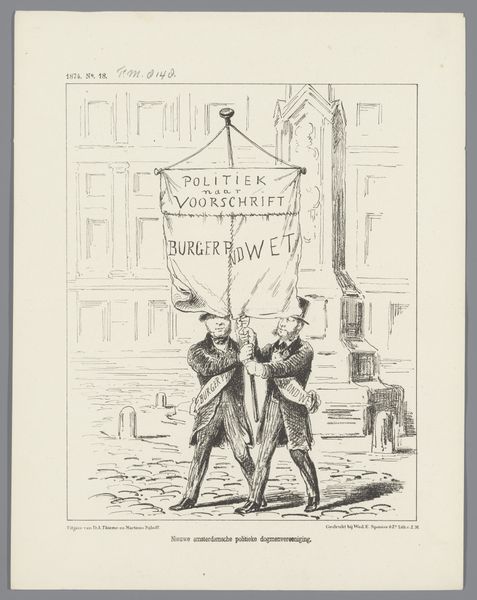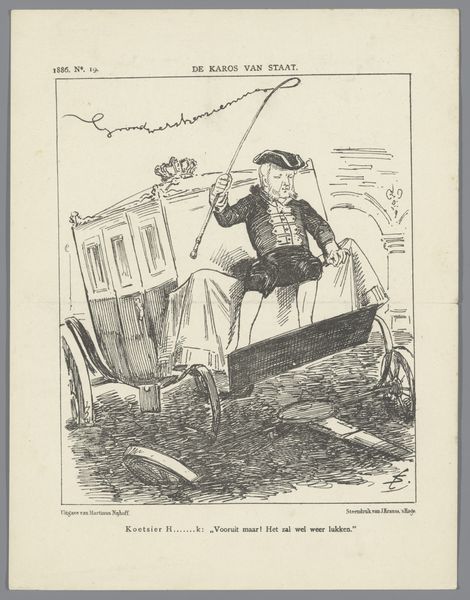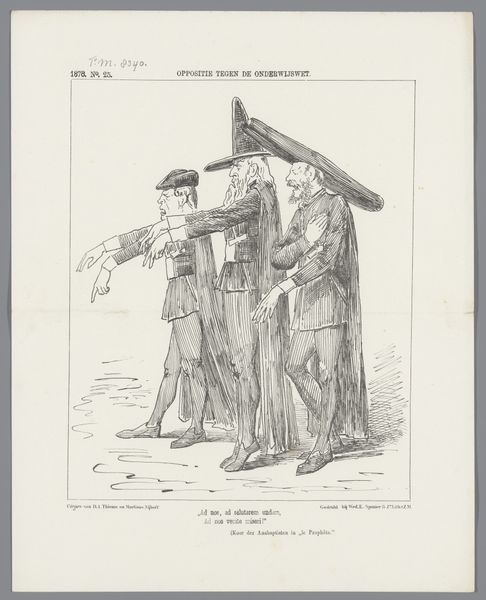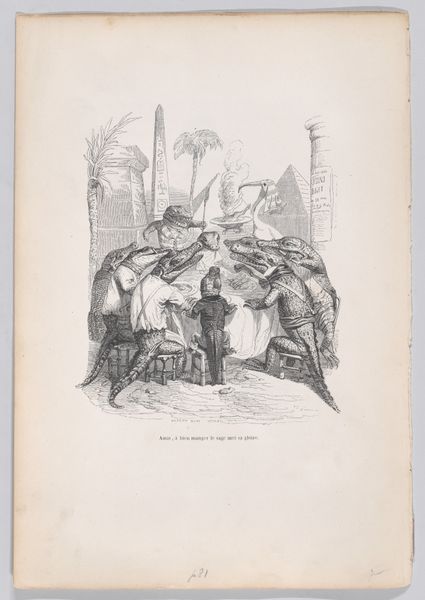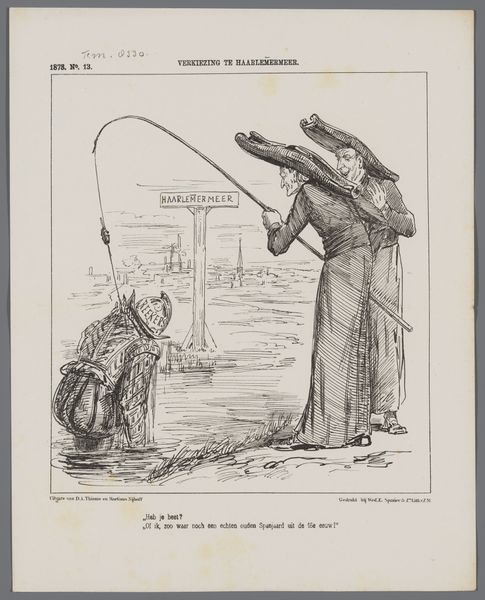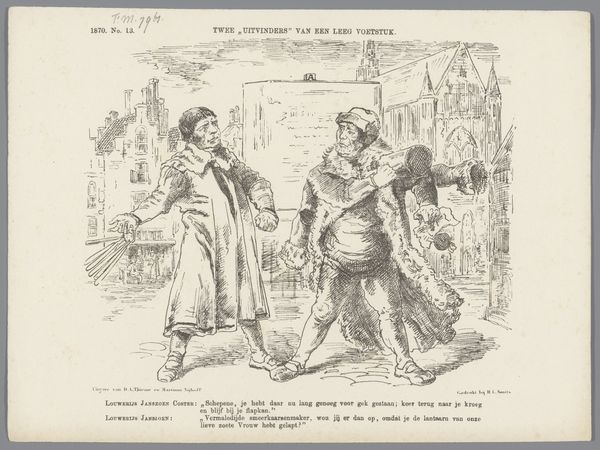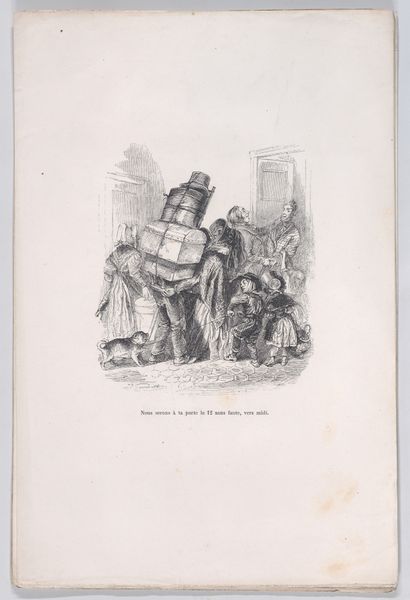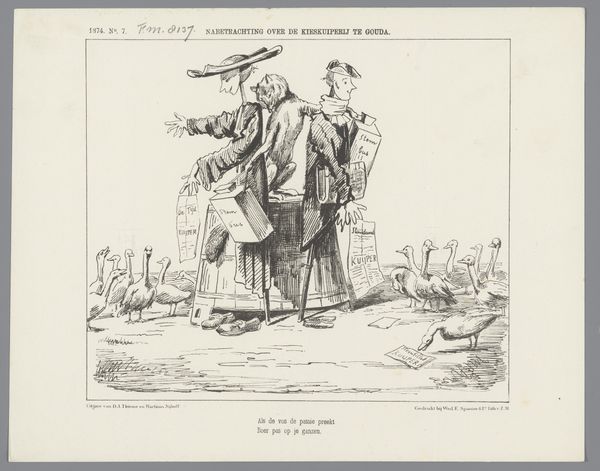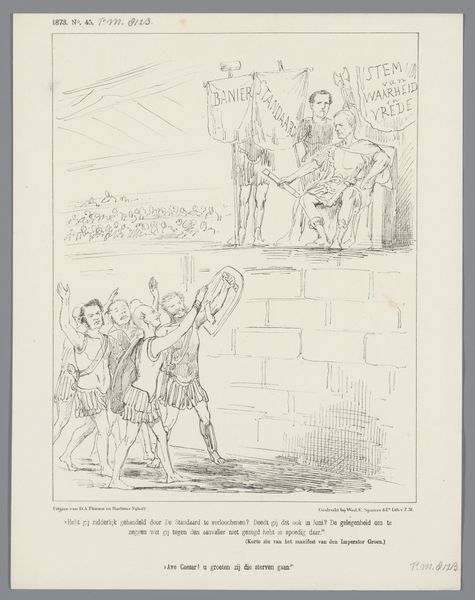
Spotprent op de ongeregeldheden tijdens de Brielse feesten, 1872 1872
0:00
0:00
Dimensions: height 275 mm, width 215 mm
Copyright: Rijks Museum: Open Domain
Curator: This is "Spotprent op de ongeregeldheden tijdens de Brielse feesten, 1872," a lithograph print created by Johan Michaël Schmidt Crans. The artwork provides a fascinating glimpse into the social tensions of the time. Editor: My immediate impression is one of rigid formality clashing with implied chaos. The figures in the foreground seem almost sculptural, but the background is a flurry of activity and dissent. The contrasting of stillness against potential violence feels powerful, doesn't it? Curator: Indeed. The print is from 1872 and presents a caricatured perspective on unrest during the Brielse celebrations. You have three women in the foreground seemingly inciting the crowd, a street full of protestors. Look closer; there's quite a story being told through political symbolism and exaggerated characters. Editor: Absolutely. Visually, the artist employs a rather stark monochromatic palette. The heavy use of hatching and cross-hatching, particularly in the dresses of the women and the distant crowd, creates depth, but also a sense of agitation. And those black bonnets or hats –what are they even? They almost act as horizontal visual weights, anchoring the entire composition. Curator: They’re part of traditional Dutch garb, here used, I believe, to specifically align these figures with conservative local sentiments. The print serves as a political commentary reflecting the deep divisions within Dutch society at the time, with a clear romanticized, albeit critical view, of a particular set of actors during those festivals. The text in the banner reads, "Weg Met de Geuzen!" which basically calls to eliminate people, a popular war cry against Spaniards, followed by "Leve Plus!" which stands for "long live More," as in rather than Orange. Editor: A narrative delivered through graphic weight, linear exaggeration and pointed iconography. What truly stays with me is this sense of compressed energy ready to burst out of the confines of the print. Curator: For me, it is the potent illustration of how local events reflected wider political dynamics. It also offers insight into how such perspectives are visually constructed and disseminated within communities, influencing their political views through art.
Comments
No comments
Be the first to comment and join the conversation on the ultimate creative platform.
